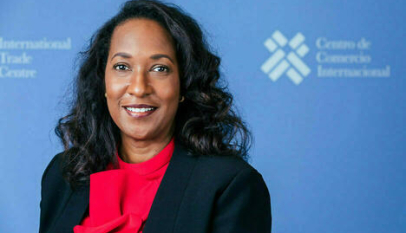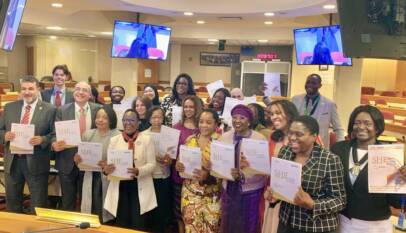INVESTIGATION: The pains of pregnant mothers in rural northern Nigeria
Northern Nigeria accounts for a huge percentage of women dying of pregnancy-and-childbirth-related complications in Nigeria, whereas the national maternal mortality ratio for Nigeria is put at 576 deaths per 100,000 live births, maternal deaths for the northeastern and northwestern sub-regions are as high as 1549 and 1024, respectively.
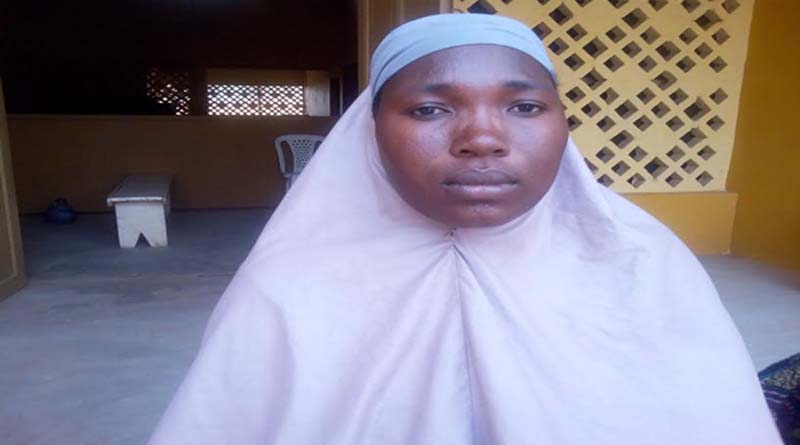
Twenty-five year old Maimunatu Abdulrahim of Dukawa, a remote village in the state of Kano is 6 months pregnant with her 4th child and although her community boasts a well-equipped primary healthcare facility it is hugely understaffed and thus underutilised.
There is neither a nurse nor a midwife in the facility; a single health extension worker is responsible for providing antenatal care services to hundreds of pregnant women in Dukawa and neighboring communities.
“We need more health workers so that we can receive antenatal care with ease and be able to deliver in the facility. At the moment, only one female health worker attends to us when we come for ante-natal care,” says Maimunatu who has been receiving antenatal care at the facility in the past 3 months.
The understaffed facility at Dukawa community which was built as far back as 2005 only began operation 3 years ago and although it is equipped with a theatre room, labour room, a laboratory, and an immunization room, the facilities are not being utilized, thus left to gather dust.
Despite its obvious failings, Dukawa’s facility is the best primary healthcare facility in terms of both staffing and equipment in the area; yet it doesn’t operate 24 hours a day thus the community’s pregnant women are left with the option of either delivering at home or in very far away functional facilities.
“If any of us goes into labour in the night we have to begin to scout for a vehicle to take her to either Kura or Dawaki general hospitals or even Kano city,” she says.
As such, majority of maternal deaths in rural areas such as Dukawa are caused by delay in presentation at proper facilities as pregnant women like Maimunatu are left at the mercy of unskilled traditional birth attendants (TBAs) and only taken to the hospital as a last resort – after their situation have been complicated by the TBAs.
In 2015 alone, over 58,000 women died of pregnancy-and-childbirth-related complications in Nigeria which makes the country second only to India in terms of maternal mortality rates in the world. Nigeria and India accounted for one-third of the world’s maternal deaths in 2015.
Although many regions of the world including Sub Saharan Africa have succeeded in halving the number of women dying of pregnancy-and-childbirth-related complications, between 1990 and 2015, maternal mortality continues to claim the lives of hundreds of thousands of African women, majority of whom live in remote and hard-to reach rural communities like Dukawa.
These deaths result from preventable causes such as pre-existing medical conditions like HIV, malaria and hypertension as well as severe bleeding, pregnancy-induced high blood pressure, malnutrition and obstructed labour.
Whereas the new Sustainable Development Goals (SDGs) are seeking to reduce the global maternal mortality ratio to fewer than 70 maternal deaths per 100,000 live births, countries like Nigeria are expected to reduce their MMRs by at least two-thirds, from their 2010 baseline.
A scary statistics
Northern Nigeria accounts for a huge percentage of women dying of pregnancy-and-childbirth-related complications in Nigeria. The 2013 Nigeria Demographic Health Survey (NDHS) pegged the national maternal mortality ratio for Nigeria at 576 deaths per 100,000 live births while maternal deaths for the northeastern and northwestern sub-regions were as high as 1549 and 1024, respectively.
In Kano, Nigeria’s most populous state and the commercial nerve centre of its northern half, whereas 50% of pregnant women access antenatal care services, only 13% of deliveries are attended to by skilled birth attendants and only 11% of deliveries in Kano take place in a healthcare facility.
The Maternal Deaths Review (MDR) scorecards for healthcare facilities in rural parts of Kano reveal even more disturbing figures; the scorecards are being put together by active Maternal and Perinatal Death Surveillance and Response (MPDSR) committees established in primary and secondary healthcare facilities across the state.
Looking at the MDR scorecard for the period between April to September 2016 reveals the rural and hard-to-reach facilities recording more maternal deaths compared to urban facilities. This is even though many a times, cases of obstructed and prolonged labour in rural areas are referred to the facilities in urban Kano.
Within the period under review, the scorecard shows that as high as 2965 maternal deaths (per 100,000 live births) were recorded at the general hospital in Dambatta, a rural local government area (LGA) in Kano, which makes it the facility with highest maternal mortality ratio not only among the rural LGAs but also in the entire state.
Trailing closely behind Dambatta were the general hospitals in Doguwa and Tudun Wada LGAs whose maternal mortality ratio within the period, was 2785 and 2647, respectively. Doguwa and Tudun Wada are some of the farthest LGAs from Kano metropolis, which could also be responsible for their high maternal death figures.
Two other rural facilities which also recorded high numbers of maternal deaths were Gwarzo and Bebeji were reported maternal mortality ratio for the period under review stood at 1515 and 1394, respectively.
Unskilled personnel and ill-equipped facilities
At the heart of the challenge of access to quality healthcare for pregnant women in rural northern Nigeria including Kano is understaffed and ill-equipped primary healthcare facilities (PHCs). Whereas some of the PHCs can be said to be well-equipped (like the one in Dukawa) most of them are understaffed; in many cases, the only available healthcare personnel are health extension workers who are unqualified to handle pregnancy-and-childbirth related complications.
“These women live in hard-to-reach communities which are far away from the [well] functioning healthcare facilities and even when they manage to come to the rural facilities, the health workers are just ‘make-do’,” says Dayyabu Mahmud of DFID’s Maternal, Newborn and Child Health (MNCH2) programme being implemented in the northern states of Zamfara, Kaduna, Jigawa, Yobe, Katsina, Kaduna and Kano.
“This is because whereas the government pays [qualified] health workers special allowances and posts them to rural areas, they collect the allowances and stay back in the city.”
The reason why healthcare workers shy away from communities such as Dukawa, Mahmud argues, is not unconnected with lack of social amenities like pipe borne water, electricity and good schools in the rural communities.
“The roads are bad; there are no social amenities so health workers won’t go to these rural communities since at least they would want their children to have quality education,” he said.
Facilities inaccessible to rural communities
The inaccessible nature of healthcare facilities to hard-to-reach rural communities has also made women’s access to maternal healthcare in rural Kano a daunting challenge; although each local government areas are supposed to have a fully functional secondary healthcare facility and every political ward, a primary healthcare facility, some of the rural LGAs in Kano do not even have secondary healthcare facilities while many of the wards don’t have functional PHCs.
Thus, whereas metropolitan Kano boasts many primary and secondary healthcare facilities, many communities in rural parts of the state – whose population is more than double that of the metropolitan area – neither have secondary healthcare facilities nor functional PHCs.
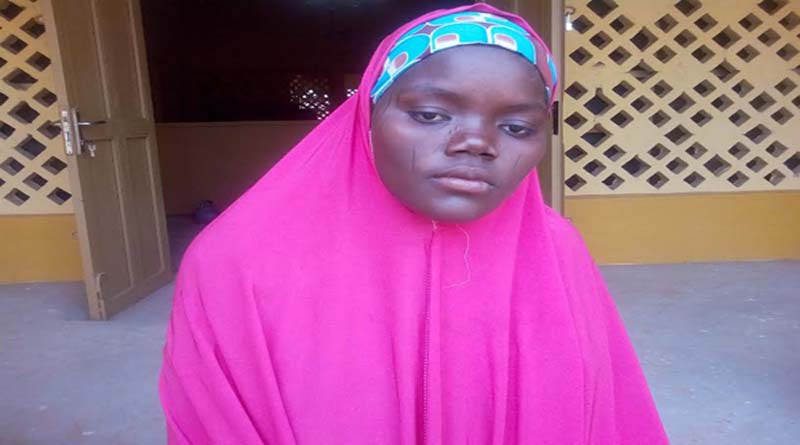
“I am now 9 months pregnant yet the only facility for me to go and access antenatal services is at Dukawa and I have to go by motorcycle, since we don’t have any other means of transport here,” says Naima Saleh, 20, a pregnant mother in Kunshama, a very remote rural community in Kano state.
Na’ima and about 50 other pregnant women in Kunshama community will have to wake up very early in the morning, skip breakfast and commence their journey to Dukawa PHC – if they don’t want to risk missing being examined by the only health extension worker in the facility, which offers ANC services twice a week: Mondays and Thursdays.
“Major healthcare facilities across Nigeria are concentrated in urban areas and Kano is not an exception, more so, access to healthcare in Nigeria is mostly through out-of-pocket expenditure, which is beyond the reach of people in rural areas where unfortunately there are more people than urban areas,” laments Mahmud.
Fatima Adamu is the national programme manager for the Women for Health (W4H), another DFID-funded programme working to address the shortage of female health workers in the rural parts of the northern states of Katsina, Yobe, Jigawa, Zamfara, and Kano.
She says “the challenge is that about 80% of female health workers are based in the urban areas whereas most of the people including pregnant women reside in rural areas. Therefore most female health workers will not want to leave their families in urban areas to work in rural areas.”
Poverty, ignorance complicating issues
Poverty and ignorance have made the case of pregnant women in the rural areas even more badly. This could be seen in the fact that although many of these rural communities practice both rain-fed and irrigation farming of highly nutritious food staples, malnutrition continues to be a major cause of maternal deaths across the communities.
“I believe pregnant mothers in rural areas should be able to feed well; balanced diet must not be expensive,” argues Hafsat Kolo of the Partnership for the Promotion of Maternal and Child Health (PPMCH), a coalition of NGOs working to promote child and maternal health.
Kolo thus call for the intensification of health education and awareness campaigns among women in rural areas so as “to make them appreciate and utilize the food staples available within their communities.”
Moreover, cultural practices which inhibit pregnant women from accessing maternal healthcare without the consent of husbands who may be far away from home as well as the work of traditional healers and herbalists continue to pose great dangers to pregnant mothers in these rural communities.
“A cultural practice whereby a pregnant woman cannot go for antenatal care without the permission of her husband who may be far away in Abuja or Lagos as well as the fact that people in rural areas see hospitals as ‘secondary option’ and therefore believe more in herbalists and traditional healers, who end up mismanaging pregnant women, is really not helping matters,” complains Mahmud.
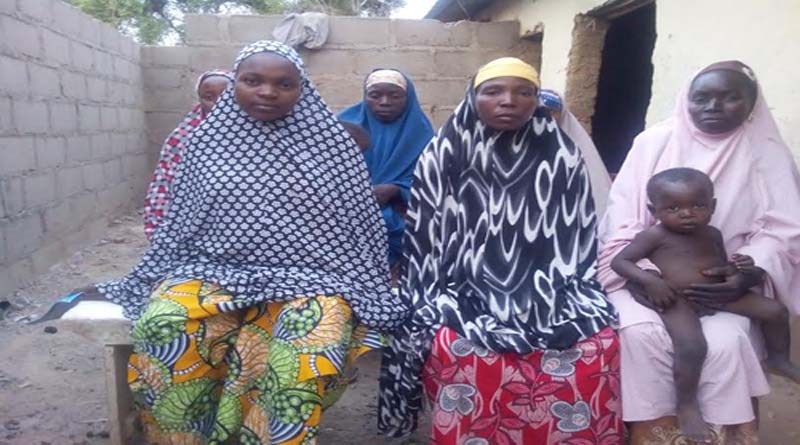
The Kano government’s encouraging efforts
In 2016, Kano had in a pioneering move established a contributory healthcare scheme “to protect families from the financial hardship of huge medical bills, limit inflationary rise in the cost of healthcare services.” In another pioneering effort, the state is also in the process of establishing the Kano State Healthcare Trust Fund, which will help provide access to quality healthcare services for more people across public healthcare facilities in the state.
“The contributory healthcare scheme is a giant move and a sustainable healthcare financing mechanism, which if implemented in accordance with the operational guidelines of its implementing agency, will greatly address the challenge of maternal deaths in the state. Again, the Kano State Healthcare Trust Fund which is also in the pipeline will help in addressing the challenge,” says Mahmud.
Mahmoud Nasir is the executive secretary of the Kano State Primary Healthcare Development Board who argues that Kano was currently working to revitalize the 484 PHCs across the state towards ensuring quality maternal healthcare delivery.
“We have realized that our 40 general hospitals cannot cater for the needs of over 20,000 communities across the state; so we are revitalizing about 484 PHCs as part of efforts to increase access to maternal healthcare for pregnant mothers in rural areas,” says Nasir. “Work has already gone far in 75 PHCs in terms of renovation, staffing, provision of equipment as well as electricity and water supply so they can function 24 hours a day.”
Daily, thousands of pregnant women will continue to lose their lives to ordinarily preventable causes in northern Nigeria, unless something drastic and urgent is done, by government actors, NGOs, and international donor organisations.


